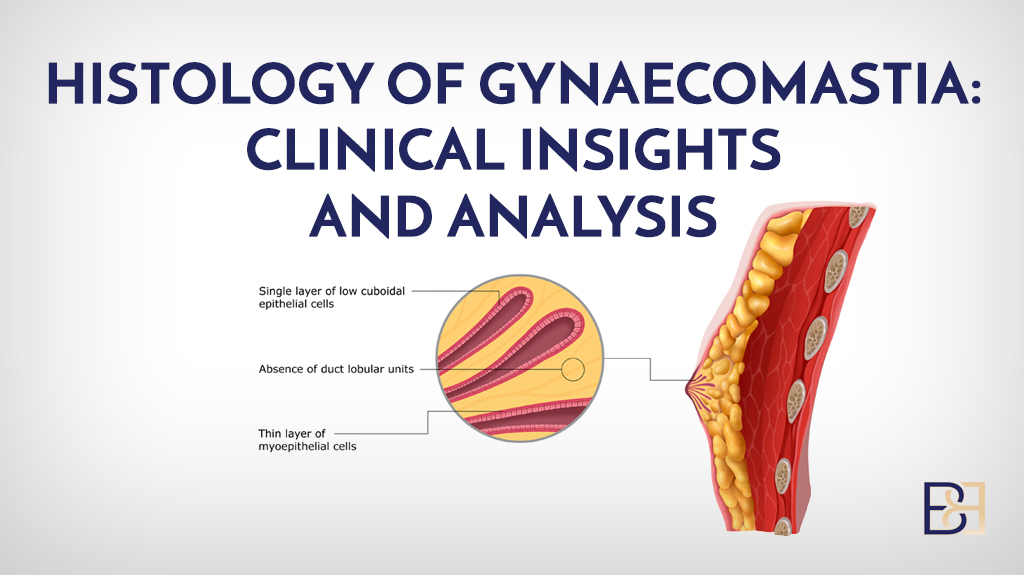Yes, men can get breast cancer. Though it’s rare, understanding male breast cancer is crucial for early detection and treatment. In this article, we cover the symptoms, risks, types, diagnosis, treatments, and support available for men with breast cancer.
Key Takeaways
- Male breast cancer is rare but can occur in men, typically diagnosed around age 71, making awareness crucial for early detection.
- Common symptoms include lumps, thickening of breast tissue, and changes to the nipple or breast skin, prompting early medical consultation.
- Treatment involves surgery, chemotherapy, hormone therapy, and targeted therapies, each tailored to the individual’s specific case and cancer stage.
What is Male Breast Cancer?

Book your appointment online now
Yes, men can develop breast cancer, although it is notably less common than in women. Male breast cancer occurs due to the abnormal growth of cells in breast tissue, which can proliferate like those found in female breast cancer. Breast cancer represents less than 1 percent of all cancers in men. However, about 1% of breast cancer diagnoses occur in men.
The lifetime risk of men developing breast cancer is approximately 1 in 830 men, with the average age of diagnosis being 71 years. These statistics highlight the importance of awareness and early detection. Despite having less breast tissue than women, which consists of glandular, connective, and fatty tissues, men are still at risk and need appropriate treatment approaches.
Understanding male breast cancer is the first step in preventing it. Awareness that men can develop this disease, even if it’s rare, aids in early symptom recognition and timely medical consultation.
Types of Male Breast Cancer

Male breast cancer can originate in the milk ducts, known as ductal carcinoma, which is the most prevalent form. This type of cancer begins in the ducts that carry milk to the nipple, and though men have fewer of these ducts, they can still be affected.
Another type, lobular carcinoma, develops in the milk-producing glands, but it is much less common in men due to the scarcity of these lobular cells. In addition to these, there are rare forms of male breast cancer, such as inflammatory breast cancer and Paget’s disease of the nipple.
These types present unique challenges and symptoms, so understanding the specific characteristics of each is essential. Recognizing the different types of male breast cancer aids in more accurate diagnosis and treatment planning.
Common Symptoms in Men
Men may notice a lump in the breast that can be mistaken for a fatty deposit. This lump is often painless but should not be ignored. A thickening of breast tissue can also be a symptom of male breast cancer. These changes in the breast are early indicators that warrant medical attention.
Dimpling of the breast skin or changes in the shape of the breast or nipple can indicate breast cancer in men. Nipple discharge is another symptom to watch for. Less commonly, pain in the breast area can also signify cancer.
Swollen lymph nodes in the armpit can signal male breast cancer. Seeking medical advice promptly when unusual symptoms appear increases treatment success rates. Early detection is crucial and awareness of these symptoms can save lives.
How Male Breast Cancer is Diagnosed
Breast cancer in men is often underrecognised, leading to delayed diagnosis and treatment. Diagnosis begins with discussing symptoms and known risk factors. A clinical breast examination by a healthcare provider is essential for identifying abnormalities.
Imaging techniques such as mammograms, ultrasounds, or MRIs visualize breast tissue for signs of cancer. These tests help identify suspicious areas that may need further investigation. A biopsy, typically using a needle guided by imaging, confirms the presence of cancer.

Lab tests on cancer cells reveal specific characteristics, including hormone receptor status and growth rate. Breast cancer in men is staged from 0 to 4, with higher numbers indicating more advanced cancer. Understanding the diagnostic process highlights the importance of timely medical intervention.
Risk Factors for Male Breast Cancer

Inherited genetic mutations, particularly in BRCA1 and BRCA2, increase the likelihood of developing breast cancer in men. Genetic testing for harmful BRCA changes benefits men with a family history of breast cancer or related conditions. Men with BRCA mutations may consider obtaining screening for breast and prostate cancers. Counseling about genetic testing helps individuals understand their cancer risk and implications for family members.
Klinefelter syndrome, characterised by an extra X chromosome, can elevate oestrogen levels and increase breast cancer risk. Liver diseases, such as cirrhosis, are linked to higher oestrogen levels, which can contribute to increased breast cancer risk. Past hormone therapy treatments that included oestrogen can raise the risk of breast cancer in men.
Older age is a significant risk factor, with most cases diagnosed after age 50. A family history of breast cancer increases a man’s risk, especially if a close relative has been diagnosed. Obesity or being overweight can significantly increase the risk of breast cancer in older men. Despite the rarity, the incidence of male breast cancer is expected to rise due to the ageing population.
Treatment Options for Male Breast Cancer

Primary treatment for early-stage male breast cancer typically includes surgery, often accompanied by radiation. Surgery is fundamental for men diagnosed with early-stage breast cancer. Yale Medicine applies the latest advances in breast cancer treatment to male patients.
In addition to surgery, other treatment options include chemotherapy, radiation therapy, hormone therapy, and targeted therapies. Each treatment plays a vital role in treating breast cancer and potentially curing male breast cancer, depending on the specific case and stage.
Surgery
Mastectomy involves removing the whole breast, including the nipple and surrounding area, and is the most common type of surgery for male breast cancer. Men undergoing surgery for breast cancer usually have the entire breast removed, often including nearby lymph nodes. This approach helps ensure that all cancerous tissues are eliminated.
In some cases, breast-conserving surgery, known as lumpectomy, may be an option if specific criteria are met, although it is usually unsuitable for most men due to insufficient breast tissue.
Surgical options for male breast cancer include mastectomy and breast-conserving surgery.
Chemotherapy
Chemotherapy employs drugs to eliminate cancer cells. These cells may have already spread to other parts of the body. This treatment is typically given through an intravenous drip in the arm. Not all men need chemotherapy, as it depends on the stage and spread of the cancer.
For those who need it, chemotherapy is a crucial part of the treatment plan, targeting cancer cells throughout the body and preventing further spread.
Radiation Therapy
Radiation therapy is often used alongside surgery to eliminate residual cancer cells, especially after procedures like lumpectomy where some cancer cells may remain. Its main aim post-surgery is to destroy any remaining cancer cells, reducing the risk of recurrence.
Adding radiation therapy to treatment plans is crucial for reducing the likelihood of breast cancer returning in men.
Hormone Therapy
Tamoxifen is the most widely used hormone therapy for men. It is specifically for those with hormone receptor-positive breast cancer. Gavin took tamoxifen for his breast cancer and experienced uncomfortable side effects while on it. Aromatase inhibitors, which work by stopping the testicles from making estrogen and testosterone, are typically combined with gonadotropin-releasing hormone agonists for treating male breast cancer.
Hormone-blocking therapy is typically taken for five years or more to ensure effectiveness. Knowing these treatment options helps men make informed decisions about their care.
Targeted Therapies
Targeted therapy is often utilized for cancers that express specific proteins, such as HER2. These treatments are designed to kill cancer cells by targeting specific proteins, making them a vital part of the treatment arsenal for certain types of male breast cancer.
Managing Life After Diagnosis
Men often experience intense emotional stress in the weeks following a breast cancer diagnosis, which can manifest as trouble thinking, eating, or sleeping. Common emotional responses include shock, anger, fear, anxiety, and sadness, potentially leading to feelings of isolation. Many men may feel surprised, depressed, self-conscious, or worried about their masculinity after a diagnosis.
Maintaining open communication with family and friends about feelings and needs is helpful. Support groups offer a platform to connect with others facing similar challenges, alleviating feelings of loneliness. Counseling or therapy supports both the diagnosed individual and their partners.
Engaging in activities like meditation, enjoyable physical exercise, and maintaining a balanced diet helps manage stress and promotes well-being. Understanding breast cancer and its treatment empowers men following a diagnosis, helping them feel more in control of their situation.
Support Resources for Men
Cancer support groups offer a space for individuals affected by cancer to share experiences and find support. These groups can focus on specific types of cancer, including breast cancer, or be open to all cancer types. The Cancer Council helps connect men with local support groups tailored to their needs.
Telephone support groups offer professionally facilitated support from home, available for those with a cancer diagnosis. Cancer Connect is a free service that connects individuals with trained volunteers who share similar cancer experiences.
Support resources for men diagnosed with breast cancer are crucial for emotional and psychological well-being.
Preventive Measures and Screening
BRCA1 and BRCA2 gene mutations significantly increase the risk of male breast cancer as well as other cancers, highlighting the importance of genetic testing. Men who have BRCA mutations or a family history of breast cancer should discuss the possibility of screening mammograms with their healthcare provider. Regular screenings and early detection can make a significant difference in the outcomes of breast cancer treatment.
Hormonal imbalances can increase the risk of male breast cancer, so monitoring hormone levels is vital. Staying vigilant about bodily changes and seeking regular medical advice helps men take proactive steps to reduce their breast cancer risk.
Summary
Understanding male breast cancer is crucial for early detection and effective treatment. From recognizing symptoms and risk factors to exploring treatment options and support resources, this blog post has covered the essential aspects of this disease. By spreading awareness and encouraging proactive measures, there can be better outcomes for men diagnosed with breast cancer.
Frequently Asked Questions
Can men develop breast cancer?
Definitely, men can get breast cancer, but it’s pretty rare compared to women. It’s important to stay aware and know the signs!
What are the common symptoms of male breast cancer?
If you’re noticing a lump in your breast, changes in shape, or unusual nipple discharge, it could be a sign of male breast cancer. Don’t ignore any of these symptoms—it’s essential to get checked out by a doctor.
How is male breast cancer diagnosed?
Male breast cancer is diagnosed through a clinical exam, imaging tests such as mammograms or MRIs, and a biopsy to confirm cancer. It’s important to catch it early, so don’t hesitate to get checked if you notice any unusual signs!
What are the treatment options for male breast cancer?
For male breast cancer, the main treatment options are surgery, chemotherapy, radiation therapy, hormone therapy, and targeted therapies. It’s crucial to discuss these options with your doctor to find the best fit for you.
What support resources are available for men diagnosed with breast cancer?
If you’re a man diagnosed with breast cancer, you can find support through cancer support groups, phone support, and programs like Cancer Connect, which pairs you with trained volunteers who have been through similar experiences. You’re not alone, and there are people ready to help you navigate this journey.





